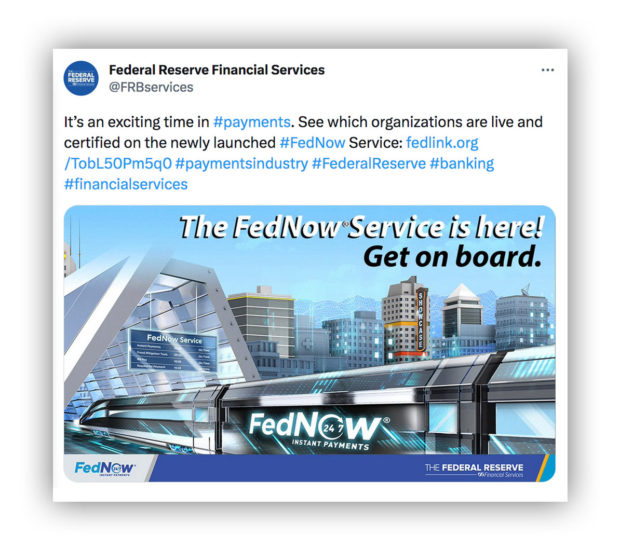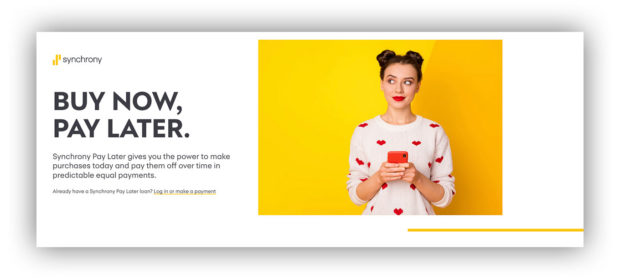The promotion and publicity touting the debut of the FedNow instant payments service has been mammoth.
But at least one analyst is underwhelmed by what is easily among the biggest developments in the payments sector to come along in years.
Sanjay Sakhrani, a managing director at Keefe, Bruyette & Woods who specializes in payments and consumer finance, says he can see some appeal for businesses to tap FedNow through their bank or credit union.
For that customer segment, “there’s a strong value proposition for instant payments, because most of them use the traditional automated clearinghouse,” he says. “This just speeds up ACH.”
But Sakhrani is skeptical about the appeal of FedNow on the consumer side. “Most electronic payments today are consumer payments and I think that will be a tougher hill to climb,” he says in an interview that also covered other payment innovations like buy now, pay later. (He’s got doubts about BNPL too, but more on that later.)

Send the Right Offers to the Right Consumers
Achieve a better return on your marketing investment. Leverage behavioral data and analytics to target the right customers with the best possible offers.
Read More about Send the Right Offers to the Right Consumers

Instant Messaging. Instant Impact.
Connect with your customers and provide lightning-fast support as effortlessly as texting friends. Two-way SMS text messaging is no longer optional.
FedNow: the Payments Product of the Hour
About two dozen financial institutions are offering the FedNow instant payments service in some form.
The group runs the gamut sizewise, including megabanks like JPMorgan Chase and Wells Fargo, large regionals like U.S. Bank, and community banks and credit unions.
But the list is likely to grow quickly. Many vendors and consultants have been talking up the service since its official start in late July.
The Federal Reserve has even cranked up its marketing — by Fed standards, anyway. The effort includes a social media promotion highlighting the speed and accessibility of moving money via FedNow.
The FedNow push underscores the challenge of persuading consumers to change their behavior, giving up credit cards and switching to using their bank accounts in new ways. (FedNow draws on deposit accounts.)
As Sakhrani’s sees it, FedNow is unlikely to be much of a disruption to the payments options consumers use today.
“You’ve got to have ubiquity in order to develop acceptance. So who’s going to accept it? How prevalent will it be everywhere you go?” he asks. “What’s in it for the consumer? Do they save anything? Do they make money doing this?”
The Federal Reserve’s Q&A web pages talk about benefits like getting paycheck funds faster and point out that someone who has left a bill for the last minute might use FedNow to avoid a late penalty. But outside of that, the Fed is silent on the question of why someone would choose to pay out what they owe to others faster.
Read more: People’s Money Habits Are Changing: 7 Studies Show the Trends
Risk of FedNow vs. Credit Cards for Consumers
Sakhrani also wonders about the risk of using FedNow. “Do you get the same type of protection using your bank account that you do when you use your credit or debit card?” he says. “The answer is ‘no.'”
What are institutions telling consumers about all this? Apparently not much.
The Financial Brand canvassed the websites of half of the early adopter financial institutions in late July, including all of the megabanks and some smaller banks and credit unions. Over half had nothing or next to nothing to say about FedNow at all. A few had short press releases announcing their early participation.
JPMorgan Chase, Wells Fargo and U.S. Bank had more to say, but solely from the viewpoint of businesses. None addressed consumer safety.
The safety concern likewise leaves Sakhrani lukewarm about “pay-by-bank” or “account-to-account” services, where online merchants use various fintech providers to accept payments that draw directly on the consumer’s bank account. The merchants avoid the interchange fees that would be charged to accept a credit card. To encourage this new consumer behavior, some provide incentives in cash or discounts on merchandise.
But Sakhrani suggests the safety issue may not be getting appropriate attention.
Read more: Can Innovative ‘Save Now, Buy Later’ App Challenge BNPL?

The Waning Prospects of Buy Now, Pay Later Firms
Buy now, pay later is a product that can be troublesome to classify. The product’s life generally begins at the point of sale so some think of it as a payment vehicle. Others see it more as a form of financing.
Sakhrani is among the latter and as a result has his doubts about the standalone companies focused on offering this service.
BNPL companies — the largest ones are Klarna, Afterpay and Affirm — approach merchants to offer the service to shoppers and subsidize interest for purchases made using it. As part of the pitch, the companies promote their ability to help merchants find new customers through marketing. They also argue that offering BNPL as an option prompts more people to buy and increases the amount they end up spending.
“I think buy now, pay later is providing sort of a platform for those consumers who aren’t savvy with credit or don’t have access to credit, and that makes sense to me,” says Sakhrani. “But if someone has access to credit, it just seems like it’s not a big step up. It actually seems like a loss.”
A credit card buyer typically has float and gets rewards of some kind, Sakhrani points out. Frequently the rewards are cash back programs.
Some BNPL players offer rewards. But in the case of Klarna, for example, the rewards are typically usable for obtaining discounts or special offers at participating merchants, not cash back.
Investors, too, have shown less enthusiasm for standalone BNPL companies since the fintech crash in 2022. The valuations of both Klarna and Affirm plunged as funding dried up for many high-flying startups yet to show any profitability.
See more coverage of payments trends in banking.

Unlocking Digital Acquisition: A Bank’s Journey to Become Digital-First
This webinar will offer a comprehensive roadmap for digital marketing success, from building foundational capabilities and structures and forging strategic partnerships, to assembling the right team.
Read More about Unlocking Digital Acquisition: A Bank’s Journey to Become Digital-First

The Power of Localized Marketing in Financial Services
Learn how to enhance your brand’s local visibility, generate more leads, and attract more customers, all while adhering to industry regulations and compliance.
Read More about The Power of Localized Marketing in Financial Services
Will BNPL Lose Momentum with Merchants?
Nonetheless, the BNPL sector has been booming and more competitors are entering the fray. Insider Intelligence forecasts the value of BNPL payments in the United States will hit $94.9 billion in 2023, an increase of more than 25% year over year.
The tech giant Apple is the most notable newcomer, with the launch of its Apple Pay Later. But banks like JPMorgan Chase and Citigroup also have started to offer a version of BNPL to their credit card customers.
Citi has created its own BNPL service for merchants as well.
The end result is more options for consumers and merchants and more competition for the fintechs who pioneered this credit category. (Accenture predicts banks are actually the ones poised to dominate the sector. )
But even with those developments aside, Sakhrani contends merchants are starting to see less value in offering BNPL through the standalone players. They realize they are paying a premium by subsidizing interest to obtain customers who can qualify for credit cards, he says.
“I think there are more opportunities for buy now, pay later to make an impact in markets where credit isn’t readily available,” Sakhrani says, citing Europe as an example. In contrast, consumers in the United States, the United Kingdom and Canada have plenty of access to credit cards.
Sakhrani doesn’t cover any standalone BNPL companies, but he does cover Synchrony (which offers Synchrony Pay Later) and Bread Financial (which offers Bread Pay). Both are issuers of private label credit cards, and for them, BNPL may be beneficial, he says.
“They can actually use buy now, pay later as a customer acquisition tool,” he explains, “so it cuts down on their customer acquisition costs.”
Read more from the interview with Sanjay Sakhrani:









